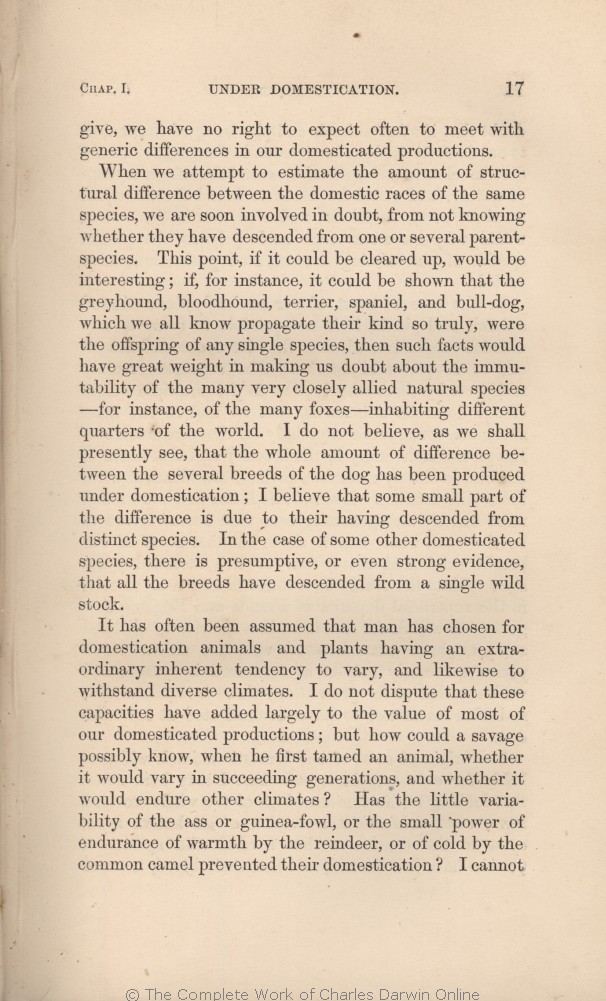When we | When we 1859 1860 1861 1866 | | In 1869 1872 |
| attempt 1859 1860 1861 1866 | | attempting 1869 1872 |
| the 1859 1860 1861 1866 1869 | | allied 1872 |
| races 1859 1860 1861 1866 1869 | | races, 1872 |
| of the same species, 1859 1860 1861 1866 1869 |
| OMIT 1872 |
| have 1859 1860 1861 1866 1869 | | are 1872 |
| parent-species. 1859 1860 1861 1866 1869 | | parent species. 1872 |
| greyhound, 1860 1861 1866 1869 1872 | | grey- hound, 1859 |
| so 1859 1860 1861 1866 1869 | so 1872 |
| very 1859 1860 1861 1866 1869 | very 1872 |
| ..... 1860 1861 1866 1869 1872 | | and 1859 |
| 1 blocks not present in 1860 1861 1866 1869; present in 1859 1872 | | all our dogs have
descended from any one wild species; but, in the case of some other domestic races, there is presumptive, or even strong, evidence in favour of this view.
|
| having 1861 1866 1869 | | being 1860 |
| some 1860 1861 1866 |
| strongly marked races in some 1869 |
| strongly marked races of some 1872 |
| presumptive, 1860 1861 1866 1869 | | presumptive 1872 |
| the breeds have 1860 1861 1866 |
| are 1869 1872 |
|
It has often been assumed that man has chosen for domestication animals and plants having an extraordinary inherent tendency to vary, and likewise to withstand diverse climates. I do not dispute that these capacities have added largely to the value of most of our domesticated productions; but how could a savage possibly know, when he first tamed an animal, whether it would vary in succeeding generations, and whether it would endure other climates? Has the little variability of the ass
or guinea-fowl, | or guinea-fowl, 1859 1860 1861 | | and goose, 1866 1869 1872 |
| reindeer, 1860 1861 1866 1869 1872 | | rein-deer, 1859 |
| camel 1861 | | camel, 1859 1860 1866 1869 1872 |
|









